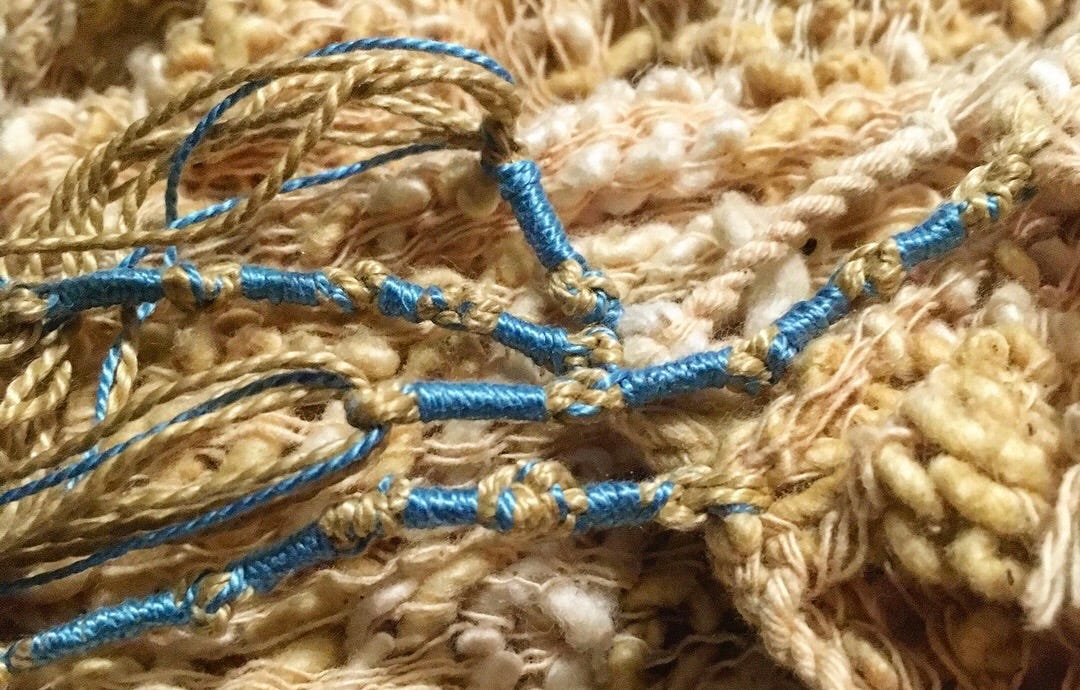Tzitzit: a guide for the curious
A progressive practice guide to working with tzitzit as a normative and magickal Jewish practice for Jewish witches and witchy Jews.
I’m not orthodox or bound by orthodox interpretations of Judaism, but that doesn't mean I'm not interested halakha and balancing keva (structure) with kavannah (intent). It also doesn't mean that I'm not interested in what halachah has to say about Jewish practice -- I just consider it the well trodden path (selected by men) -- not law. What it does mean is that times change, customs change, and just because "it was so" 1000 years ago -- doesn't mean it's right now. Also, there has never been one way to be Jewish, and so the idea that there is a single, monolithic way to do any Jewish practice right is nonsense. It really means what I’m interested in is being part of movements that create new paths of halakha, which means “the way”, that branch of and create new journeys and opportunities to engage Jewishly.
Disclaimers out of the way...
Table of Contents
Introduction
To develop this approach, I studied what the Shulchan Aruch had to say about Tzitzit -- along with dozens of other texts, papers, and approaches. There is a full bibliography at the end of this post.
There were a few key passages that have stood out as inspiration, and precedent on the idea of innovation around tzitzit. Most will say that women are not "obligated" to wear tzitzit, and so we shouldn't. However the Talmud is not 100% on this. It's a debate. And even some who agree that women are not obligated, don't always agree women shouldn't. Others in the Talmud and beyond, feel that women (and hence all genders in our modern less binary approach to gender) are obligated and should be wearing tzitzit.
"Therefore the fringes are actually a kind of metaphysical conduit, directing divine energy to the wearer from on high. The knots represent the power of the commandments to “bind” sin, or even demons.
Based on this, the Sages occasionally credit the fringes with a supernatural ability to prevent one from sinning. In one tale, the fringes literally slap their wearer in the face when he is about to transgress."
"One esoteric teaching holds that the dangling threads represent both the undone work of Creation and the divine shefa (or emanation), which flows “downward” into the Four worlds. Therefore the fringes are actually a kind of metaphysical conduit, directing divine energy to the wearer from on high.
The Encyclopedia of Jewish Myth, Magic, and Mysticism (R’ Geoffrey Dennis)
Tzitzit being loose threads are like the unwoven portion of the tallit. As such they represent the incompleteness in G!d/dess’ garment. This unwoven part is left for humanity to complete. … Since the the tzitzit represent the bond between G!d/dess and humanity, they hang down below the tallit. G!d/dess’ tallit is high above our reach, but Zhe’s tzitzit hang down like a lifeline that we can grasp hold of. They reach down to us so that we may complete G!d/dess’ tallit, while at the same time perfecting ourselves.
(note, gender and G!d/dess language updated by Kohenet Ketzirah)
According to Kaplan, the Divine tallit is made from Chashmal (electrum/aether) from Ezekial’s vision
Tzitzith: A Thread of Light (by Aryeh Kaplan)
What is the connection between the tzitzit (ציצת), the fringes with knots that adorn the four corners of the tallit, and the word tzitz (ציץ), whose primary meaning is “blossom” or “flower?”Tzitz (ציץ) is a palindrome, with the letter yod flanked by a letter tzadi on either side. The letters seem to form a picture of a blossom that is small and encased.
TZITZ, TZITZIT AND THE BUDDING PLANT (by R’Dina Shargel)
Keep reading with a 7-day free trial
Subscribe to Making Magic/k/q to keep reading this post and get 7 days of free access to the full post archives.

